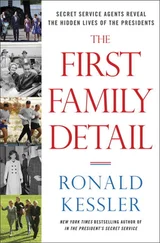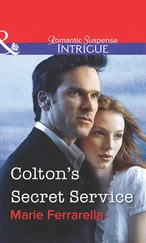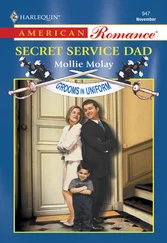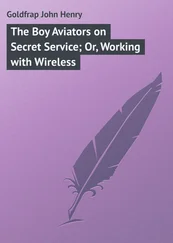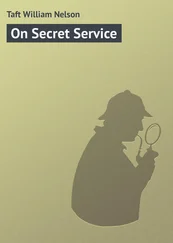Hillary’s campaign staff planned a visit to a 4-H club in dairy farm country in upstate New York. As they approached the outdoor event and she saw people dressed in jeans and surrounded by cows, Hillary flew into a rage.
“She turned to a staffer and said, ‘What the [expletive] did we come here for? There’s no money here,’” a Secret Service agent remembers.
In contrast to Hillary, since leaving the White House, Bill Clinton is “very friendly to the agents,” says one agent. “I think he realizes once he’s out of office, we’re pretty much all he’s got, and he does treat the guys really well.”
Until 1997, former presidents received lifetime Secret Service protection, as did their spouses unless they remarried. However, congressional legislation that became effective in 1997 limited the protection of former presidents who leave office after that date to no more than ten years after they leave office. Bill Clinton will be the first president whose protection will end after ten years. Children of former presidents receive protection to age sixteen. In September 2008, Congress passed legislation extending protection of the vice president, his spouse, and his children who are under sixteen years of age to six months after he leaves office.
After Clinton left the presidency, “Anywhere he went, he shook hands; he’d go out of his way to shake the hand of a worker,” says a former agent who was on his detail. “Fifty feet away and on a tarmac, he’s walking around a plane to shake the hand of a worker. Or going through the hotel’s restaurant, he’s in the back in the kitchen shaking people’s hands and taking pictures.”
Clinton’s office is in Harlem, where a woman on the street told the agent, “Honey, you can take the day off. We’re not going to let anything happen to that man.”
22

Shutting Down Magnetometers
DURING SENATOR JOHN Kerry’s presidential campaign, an event near a train station was about to start. A thousand supporters still had to be screened.
“What are we going to do?” a Kerry staff member said. “There’s still a thousand people waiting to come to the mags [magnetometers].”
“Right,” the agent said in response. “This is security. They’ll come in as soon as we can screen them.”
“Well, he’s going to be here in five minutes. There’s no way they’re going to get them in the mags,” the aide said.
According to the agent, a Secret Service supervisor then allowed the rest of the crowd to enter unscreened.
“That happened a number of times at other sites, other venues,” the agent says. “How are they making these decisions? You’ve got agents doing the right thing, making this as safe as it can be for the candidate, and one supervisor completely undercuts it.”
When President George W. Bush visited an eastern European country, “The local police set up a very good checkpoint and were doing a thorough job of screening people with magnetometers,” an agent who was assigned to the trip recalls. “When a staff lead saw the mags were backed up and not all the people would make it to hear Bush’s speech, she demanded that the mag officers expedite clearing people through. When a Uniformed Division lieutenant said they needed to do their job, the White House staff person completely went nuts, threatening the officer and threatening to report him to the head of Bush’s detail. The local authorities held their ground and did not cave to the staffer.”
Yet at other times, the Secret Service bows to White House or candidate pressure to stop magnetometer screening. When acquiescing to such requests, Secret Service management assures the White House staff that stopping screening is not a problem, Andy Card, President Bush’s former chief of staff, tells me. The White House, in turn, trusts the service.
Aides want to believe in the omnipotence of the Secret Service because it serves their political ends. They do not want to annoy stragglers. Yet if one of the people allowed through without screening drew a weapon or threw a grenade and assassinated a president or a candidate, it would be entirely because of the Secret Service’s negligence. Indeed, Arthur Bremer was able to shoot Alabama governor George Wallace—the only presidential candidate shot while under Secret Service protection—because magnetometers were not used.
As was the case with protecting presidents, Congress was slow to act when it came to protecting presidential candidates. It did not extend protection to candidates until Robert F. Kennedy was assassinated on June 5, 1968, after he won the Democratic presidential primary in California. As a result of the legislation, Secret Service agents were protecting Wallace on May 15, 1972, when he spoke to about two thousand people at a shopping center parking lot in Laurel, Maryland. It was a beautiful, sunny day. Because of the heat, Wallace decided to remove his cumbersome bulletproof vest.
“The crowd was cheering and everyone was responding well to him,” recalls William Breen, a Secret Service agent on his detail at the time. “He certainly could electrify a crowd. And when he concluded his speech, he was supposed to leave the podium and go directly, directly to the car. There were not to be any intermediate stops. And as he started—I was the point agent—he was to follow me. And I was going to go right over to the automobile. He was to get in and that was it, we were off to wherever we were going.”
“You’ve got my vote,” Clyde Merryman, an exercise boy at Pimlico Race Track, told Wallace.
Just then, Arthur Bremer jumped from the second row of spectators and yelled, “Governor, over here!”
“He [Wallace] just went right to Bremer, and of course the configuration of the protective circle changed,” Breen says. “Bremer opened up on him and shot him.”
The first .38 caliber bullet tore into Wallace’s midsection. Bremer fired five more times. All but one shot hit its mark.
The governor, coatless under the afternoon sun, fell backward on the pavement. There were red stains on his blue shirt. His wife, Cornelia, rushed to his side, crying and cradling his head in her hands. Her beige suit was smeared with blood.
“Jimmy Taylor, who was the agent in charge of the detail, and I were the first to Wallace, and we got him on the ground,” Breen says.
“Governor, this is Bill. You’ve been shot. You’ll be all right,” Breen whispered into his ear.
Secret Service agents and Alabama state troopers pounced on Bremer. Besides Wallace, Bremer had wounded Alabama trooper E. C. Dothard, Secret Service Agent Nicholas Zarvos, and Dora Thompson, a Wallace campaign volunteer. Although Wallace survived, he was paralyzed, and he dropped out of the race.
Like most assassins, Bremer kept a diary. His jottings described how pathetic and insignificant he thought he was. Also, like most assassins, Bremer had stalked his victim. Before shooting Governor Wallace, Bremer had stalked Richard Nixon and other national figures. Only days before he shot Wallace, Bremer had sat in his car in Kalamazoo, Michigan, for nearly the entire day outside an armory where Wallace was scheduled to speak. A store owner called the police, and Bremer was picked up as a suspicious person. He told police that he was waiting to hear Wallace’s speech. Satisfied, the police released him without searching for a weapon.
As with the previous assassination attempts, the Secret Service learned lessons from the incident. Back then, the Secret Service did not travel with emergency medical technicians in case of an assassination attempt. Breen remembers looking for a pack of cigarettes so he could rip off the cellophane and try to stanch a gaping wound in Wallace’s chest. Now the Secret Service alerts hospitals when the president or other protectees will be in their area. At least as far back as Franklin Delano Roosevelt, a military doctor has traveled with the president and has maintained a medical facility at the White House.
Читать дальше


